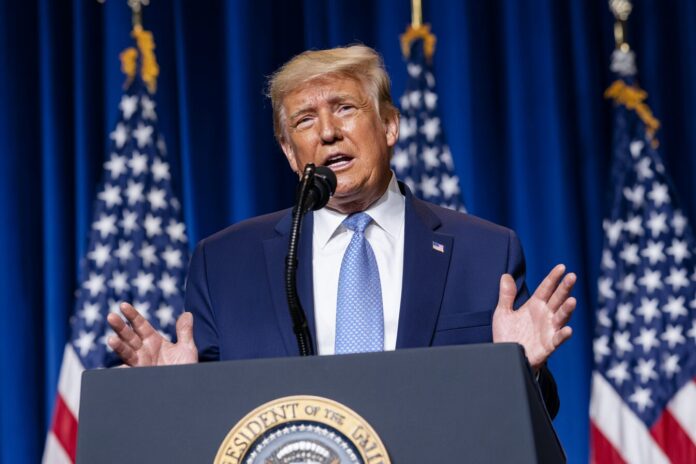For decades, the United States Federal Reserve has been celebrated as an independent institution, free from the direct influence of day-to-day political pressures. However, recent clashes involving ex-President Donald Trump have cast a long shadow of doubt over this long-held belief.
Most importantly, these events have reignited debates surrounding central bank autonomy and the true extent of executive influence on monetary policy. Because Trump’s public challenges—ranging from demanding steep rate cuts to attempting an unprecedented dismissal of a sitting Fed governor—have raised profound questions about institutional impartiality, it is now crucial to explore the underlying dynamics at play. Therefore, understanding these developments is essential for anyone interested in the evolving intersection of politics and economics.
The Foundations of Federal Reserve Independence
The concept of an independent Federal Reserve is relatively modern. Initially, central banks worked closely with government agencies to tackle pressing crises. In the wake of World War II, U.S. monetary policy was largely intertwined with national fiscal needs, meaning that the Fed was expected to support government debt and align with political priorities. Because these relationships were born out of necessity, they did not guarantee immunity from political interference.
After the turbulent economic landscape of the 1970s—with soaring inflation and significant market instability—the Fed began to emphasize its autonomy as a means of preserving price stability and financial credibility. Besides that, the evolution of this independence was marked by a deliberate effort to buffer monetary policy decisions from short-term political considerations. As academic analyses, such as those published by Harvard’s Kennedy School, indicate, the Fed’s journey towards independence was a response to both economic necessity and public demand for long-term stability.
Trump’s Confrontation: Testing the Limits
During his tenure and even after leaving office, Donald Trump has not hesitated to publicly challenge the Federal Reserve’s policies. His efforts have taken on many forms: from vociferous demands for sharper rate cuts to open criticism of Chair Jerome Powell. Most importantly, Trump’s controversial move to target Governor Lisa Cook has set a precedent as no president in modern history had attempted such a direct intervention.
Furthermore, these actions have rattled not only domestic economists but also global financial markets. Because investors closely monitor any sign of political meddling in monetary policy, even subtle hints of interference can trigger market volatility. As noted by Bitcoin News and corroborated by other sources, the ramifications could be severe, leading to potentially higher inflation and increased borrowing costs that directly impact American households.
Reassessing the ‘Myth’ of True Independence
Many scholars now argue that the notion of complete independence for the Federal Reserve is more of an ideal than a reality. Historically, the Fed has periodically bowed to political pressures when national priorities demanded it. For example, during the postwar years, monetary policies were often aligned with governmental fiscal strategies. Most importantly, while the Fed gained a reputation for autonomy after the economic upheaval of the 1970s, its underlying structure has always allowed for some level of political influence.
Because global markets demand certainty, any suggestion that the Fed might be swayed by political agendas—even momentarily—can be enough to unsettle investors. This phenomenon, explained in detailed analyses from sources such as ABC News, reinforces the idea that the Fed’s aura of complete independence is indeed a myth that requires constant reinforcement through both policy and practice.
Legal Framework and Institutional Challenges
Legal experts emphasize that the power dynamics surrounding the Federal Reserve are complex. Although the president has the authority to appoint key officials, the removal of these appointees is constitutionally safeguarded by legislative oversight. Therefore, while Trump’s maneuvers have tested these boundaries, the legal structure still offers a significant layer of protection. However, concerns remain that the political climate could embolden future leaders to encroach on what has traditionally been a non-political space.
Moreover, recent analyses, including insightful commentary in outlets like Atlantic Council, stress that the resilience of the Fed’s independence hinges on public trust and institutional norms. Because any erosion of this trust can lead to widespread economic instability, it is imperative to ensure that legal and practical barriers work in tandem to protect the central bank’s efficacy in managing monetary policy.
Implications for the American Public and Global Markets
For everyday Americans, a diluted separation between politics and monetary policy can have lasting consequences. Because a politically compromised Federal Reserve could result in runaway inflation and unpredictable interest rates, the economic risks extend far beyond the corridors of Washington. Most importantly, a loss of faith in the Fed could undermine the stability of the U.S. dollar and, by extension, the global financial system.
Furthermore, the international community is watching how these political theatrics will impact not only domestic economic policy but global financial markets as well. As outlined in reports by Jacobin, any perceived interference in the operational integrity of central banks could trigger a crisis of confidence, affecting investment decisions worldwide. Therefore, reinforcing the separation between politics and monetary policy is fundamental to ensuring economic stability on both national and international levels.
The Road Ahead: Upholding the Pillars of Independence
Looking to the future, the ongoing debate over the Federal Reserve’s independence may signal the beginning of a broader transformation in how monetary policy is administered. Because external pressures—from both political figures and global markets—are ever-present, the sustainability of the Fed’s independent stance largely depends on its ability to adapt while upholding its core principles.
Besides that, the resilience of the institution is tied to a collective commitment among policymakers, legislators, and the public to maintain a clear line between political interests and monetary decisions. As research from Harvard’s Kennedy School and other respected institutions suggests, reinforcing this boundary is not only beneficial for the U.S. economy but is also vital for preserving confidence in global financial systems.



